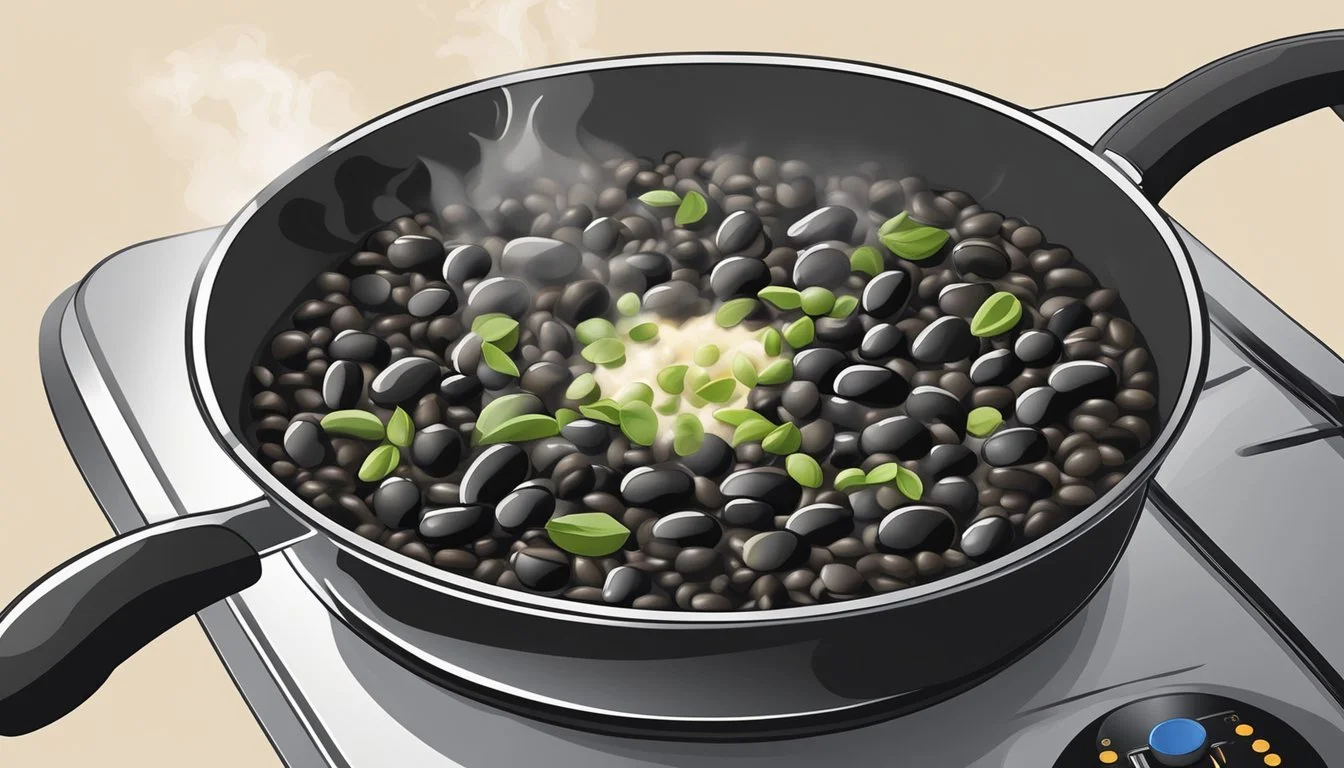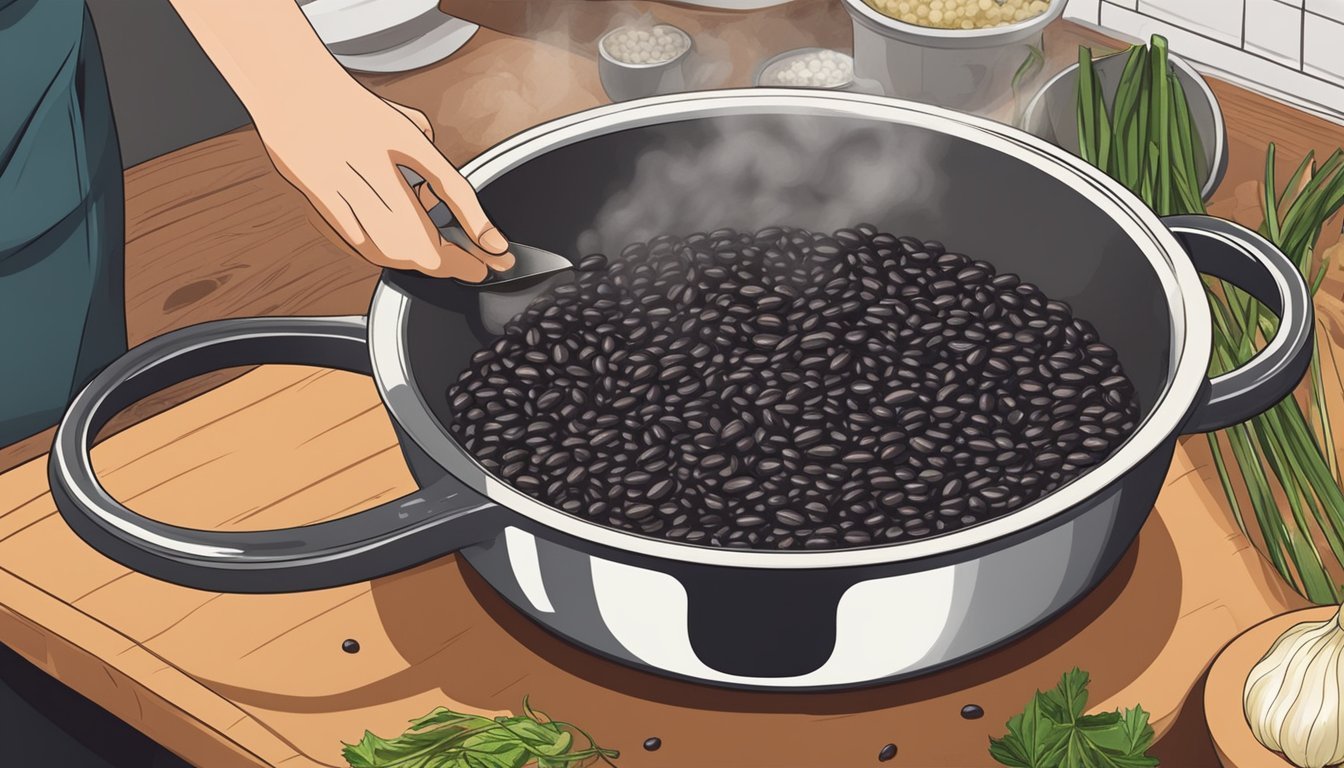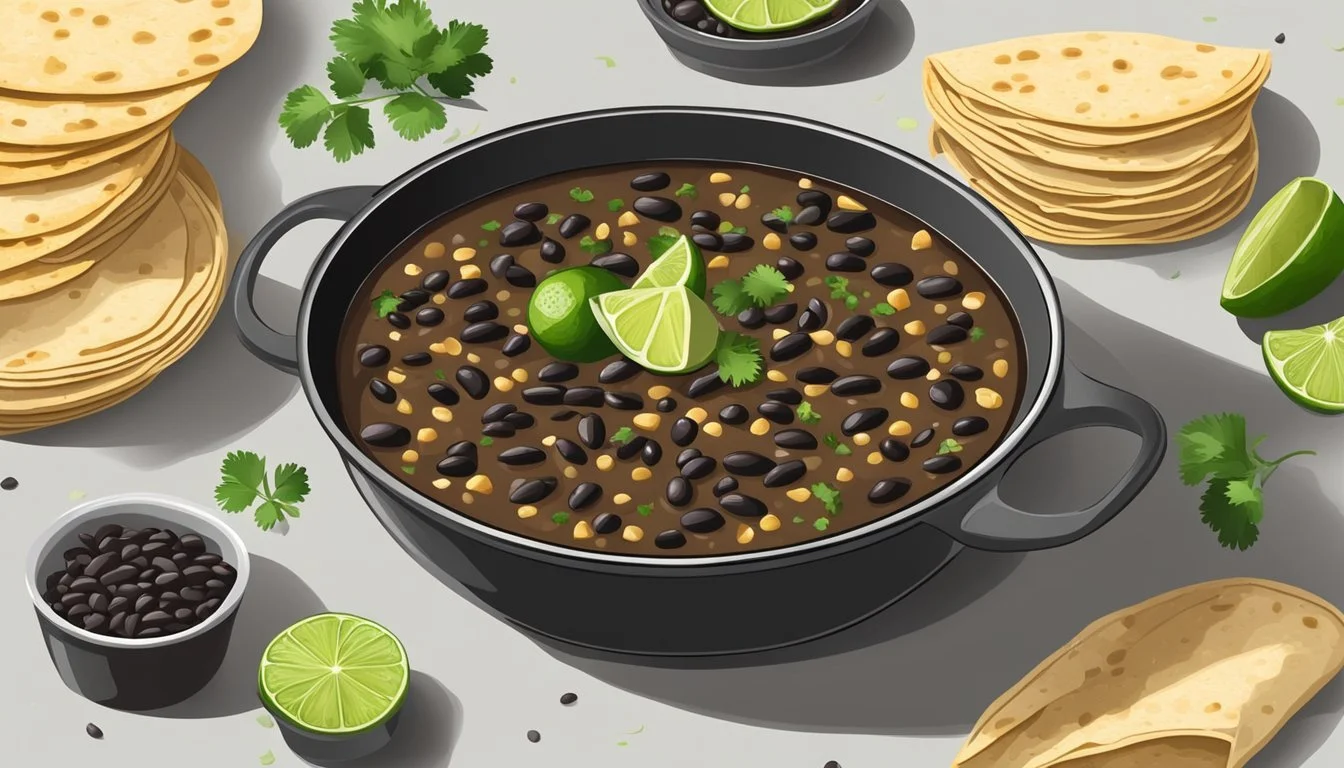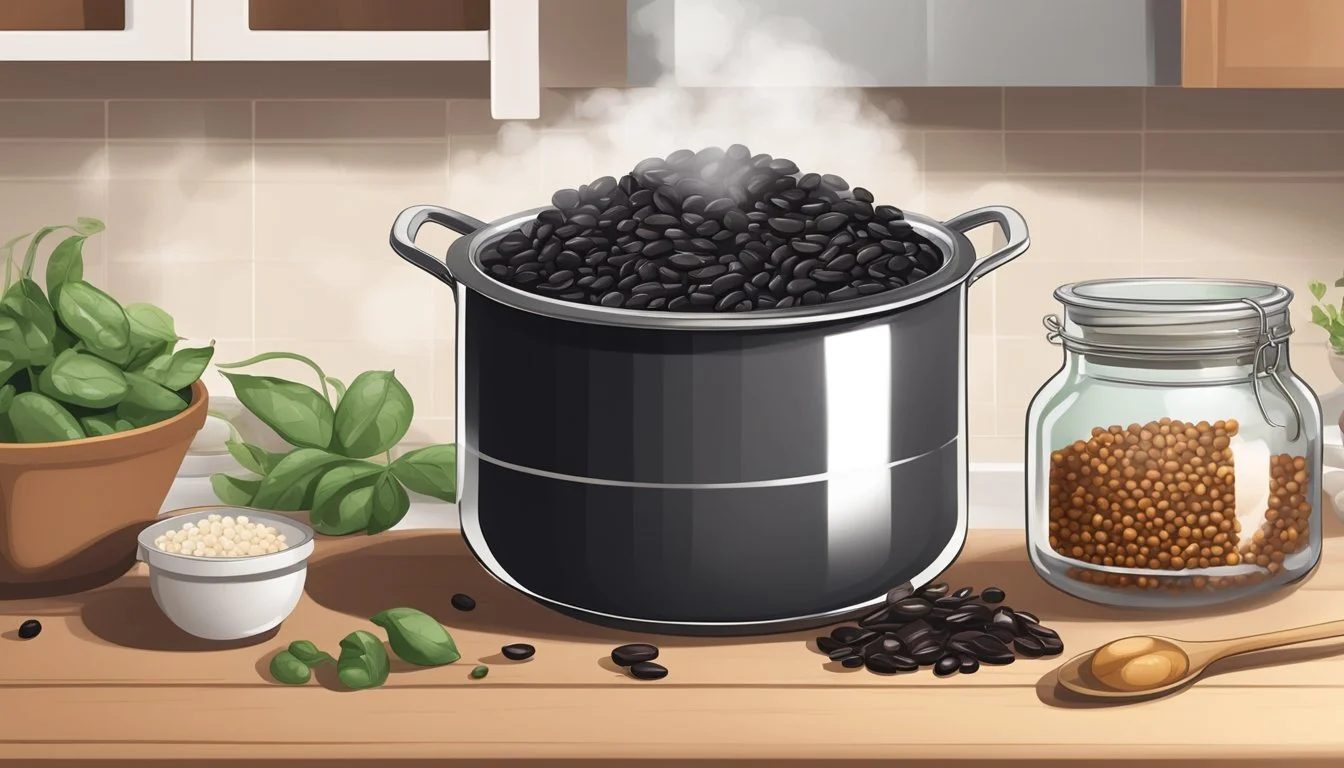How to Cook Black Beans
3 Easy Methods for Delicious Results
Black beans are a versatile and nutritious legume, packed with protein, fiber, and essential minerals like iron and calcium. These small, jet-black beans are a staple in many cuisines around the world, offering a rich, earthy flavor and creamy texture when cooked properly.
Cooking black beans from scratch is simple and yields superior results compared to canned varieties. Whether using a stovetop, slow cooker, or pressure cooker, the process involves soaking (optional but recommended), seasoning, and simmering until tender. Common aromatics like onion, garlic, and bay leaves enhance the beans' natural taste.
For those following plant-based diets, black beans serve as an excellent source of vegan and vegetarian protein. They can be incorporated into a wide range of dishes, from soups and stews to salads and grain bowls. With their impressive nutritional profile and culinary adaptability, black beans are a valuable addition to any healthy eating plan.
Selecting and Storing Black Beans
Black beans are versatile legumes that can be stored in various forms for both short-term and long-term use. Proper selection and storage techniques ensure optimal flavor, texture, and nutritional value.
Types of Black Beans
Dried black beans offer the most economical option and longest shelf life. Look for beans that are uniform in size, free from cracks, and have a shiny appearance. Avoid beans with signs of moisture or insect damage.
Canned black beans provide convenience but may contain added salt. Choose low-sodium varieties when possible. Check the expiration date and ensure the can is free from dents or bulges.
Fresh black beans, though less common, can be found at farmers' markets or specialty stores. Select pods that are firm and unblemished.
Storage Solutions
Dried black beans should be kept in an airtight container in a cool, dry pantry. They can last up to 1 year when stored properly.
Canned beans can be stored in the pantry for up to 2-3 years. Once opened, transfer unused beans to a sealed container and refrigerate for 3-4 days.
Cooked black beans can be refrigerated in an airtight container for 4-5 days. For longer storage, freeze in portion-sized containers for up to 6 months.
Pantry Management
Organize your pantry by placing older beans in front for first use. Don't mix new beans with older ones, as cooking times may vary.
Label containers with purchase or cooking dates to track freshness. Regularly inspect stored beans for signs of spoilage or pest infestation.
Consider vacuum-sealing dried beans for extended storage. This method can preserve quality for up to 2 years.
Use clear containers to easily identify and monitor bean levels. Rotate stock to maintain freshness and prevent waste.
Preparation Before Cooking
Properly preparing black beans before cooking is essential for optimal taste, texture, and digestibility. Taking a few key steps ensures the best results.
Sorting and Rinsing Beans
Start by spreading the dried black beans on a flat surface. Carefully inspect them, removing any small stones, debris, or damaged beans. This step prevents unpleasant surprises in the final dish.
Transfer the sorted beans to a colander. Rinse them thoroughly under cool running water. Gently agitate the beans with your hands to remove any dirt or dust.
Continue rinsing until the water runs clear. This process cleans the beans and helps remove any surface contaminants.
To Soak or Not to Soak
Soaking black beans is optional but offers several benefits. It reduces cooking time and can make the beans easier to digest.
Soaked beans often cook more evenly and may have a creamier texture. However, some cooks prefer the firmer texture and stronger flavor of unsoaked beans.
If time is limited, cooking unsoaked beans is perfectly acceptable. Simply increase the cooking time by 30-60 minutes.
Soaking Techniques
For a traditional soak, place rinsed beans in a large bowl. Cover with cold filtered water by about 2 inches. Let them soak at room temperature for 8-12 hours or overnight.
Quick-soak method: Put beans in a pot, cover with water, and bring to a boil. Remove from heat and let sit for 1 hour.
After soaking, drain and rinse the beans again. This removes excess starch that can cause foaming during cooking.
Use fresh water for cooking to ensure the best flavor. Soaked beans are now ready for your favorite black bean recipe.
Cooking Methods
Black beans can be prepared using various techniques, each offering unique benefits. The cooking process typically involves simmering until tender, with options ranging from traditional stovetop methods to modern electric appliances.
Stovetop Simmering
Stovetop simmering is a classic method for cooking black beans. Start by rinsing the beans and placing them in a large pot with water. Bring to a boil, then reduce heat and simmer gently.
Cook time varies based on bean freshness but usually takes 1-2 hours. Stir occasionally and add water if needed to keep beans covered.
A Dutch oven works well for this method, providing even heat distribution. Season with salt towards the end of cooking to prevent tough beans.
Pressure Cooking
Pressure cooking significantly reduces cooking time for black beans. Add rinsed beans and water to the pressure cooker, using a 1:3 ratio of beans to liquid.
Lock the lid and cook at high pressure for about 30 minutes. Allow natural pressure release for 15-20 minutes before opening.
This method is ideal for quick meal preparation. Beans cooked under pressure often have a creamy texture.
Using a Slow Cooker
Slow cookers offer a hands-off approach to cooking black beans. Place rinsed beans in the slow cooker with water or broth, using a 1:4 ratio of beans to liquid.
Cook on low for 6-8 hours or on high for 3-4 hours. Check occasionally and add liquid if needed.
This method is convenient for busy schedules. The gentle, prolonged cooking results in tender beans with rich flavor.
Instant Pot Techniques
The Instant Pot combines pressure cooking speed with slow cooker convenience. Rinse beans and add to the pot with water, using a 1:3 ratio.
Select the "Bean/Chili" setting or manually set for 30 minutes at high pressure. Allow natural release for 15-20 minutes.
For softer beans, increase cooking time by 5-10 minutes. The Instant Pot's sauté function can be used to add aromatics before pressure cooking.
Seasoning and Flavor Enhancements
Black beans can be transformed from bland to bold with the right seasonings and flavor enhancers. A combination of herbs, spices, aromatics, and acidic ingredients elevates their taste profile and creates delicious dishes.
Herbs and Spices
Cumin is a key spice for seasoning black beans, imparting an earthy, warm flavor. Start with 1/2 teaspoon per can of beans and adjust to taste. Oregano adds a subtle Mediterranean touch, while bay leaves contribute depth during cooking. Remove bay leaves before serving.
Chili powder brings a mild heat and complexity. Use 1/4 to 1/2 teaspoon per can for a gentle kick. For those who enjoy spice, red pepper flakes can be sprinkled in to taste.
Salt is crucial for enhancing the beans' natural flavors. Sea salt or kosher salt work well. Add in small amounts, tasting as you go. Black pepper provides a subtle bite and complements the other spices nicely.
Aromatics
Onions and garlic form the aromatic base for seasoned black beans. Dice one small onion and mince 2-3 garlic cloves for each can of beans. Sauté them in olive oil until softened before adding the beans.
For a flavor boost, use shallots or red onions instead of white or yellow varieties. Roasted garlic can add a sweeter, more mellow flavor compared to raw garlic.
Fresh cilantro is a popular herb for black beans. Chop and stir in a handful just before serving for a bright, fresh taste. Some cooks also enjoy adding a bit of cilantro stems during cooking for extra flavor.
Acidic Additions
Lime juice brightens the flavor of black beans and balances their earthiness. Start with 1 tablespoon per can of beans and adjust to taste. Lemon juice can be used as an alternative.
For added citrus flavor, incorporate lime or lemon zest. A teaspoon of zest can significantly enhance the dish without adding extra liquid.
Vinegar is another acidic option. Apple cider vinegar or red wine vinegar work well. Use sparingly, starting with 1 teaspoon per can of beans.
Some cooks like to add a splash of hot sauce for both acidity and heat. This can range from milder varieties to potent habanero sauces, depending on personal preference.
Serving Suggestions
Black beans offer versatile serving options that complement various cuisines and dietary preferences. Their rich flavor and hearty texture make them suitable for both traditional and innovative dishes.
Accompaniments and Pairings
Black beans pair exceptionally well with cilantro lime rice, creating a classic combination. Brown rice or quinoa also make excellent bases for black bean bowls. For a lighter option, serve black beans over mixed greens or spinach salads.
Grilled vegetables like bell peppers, zucchini, and corn enhance the beans' earthy flavors. Top with fresh salsa, diced avocado, or a dollop of sour cream for added taste and texture.
Corn tortillas or crispy taco shells transform black beans into satisfying veggie tacos. Add shredded cheese, lettuce, and pico de gallo for a complete meal.
Creative Recipe Ideas
Black bean burgers offer a protein-packed alternative to traditional meat patties. Mix mashed black beans with breadcrumbs, spices, and finely chopped vegetables for a flavorful veggie burger.
Black bean and corn salad makes a refreshing side dish or light lunch. Combine cooked black beans with sweet corn, diced red onion, bell peppers, and a zesty lime dressing.
For colder months, black bean soup or chili provides comfort and warmth. Blend a portion of the beans for a creamy texture while leaving some whole for added texture.
Black bean casseroles incorporate layers of tortillas, cheese, and vegetables for a hearty family meal. Top with fresh cilantro and a squeeze of lime before serving.
Health Benefits and Nutrient Profile
Black beans are a nutritional powerhouse. They contain high levels of protein, fiber, and essential minerals.
A half-cup serving of cooked black beans provides approximately 8 grams of protein and 7.5 grams of fiber. This combination promotes satiety and aids in digestive health.
Black beans are rich in iron, magnesium, and folate. These nutrients support various bodily functions, including red blood cell production and nervous system health.
The antioxidants in black beans, particularly anthocyanins, may help reduce inflammation and protect against chronic diseases.
Black beans are naturally gluten-free, making them an excellent choice for those with celiac disease or gluten sensitivity.
Nutrient Amount per 1/2 cup cooked Calories 114 Protein 8g Fiber 7.5g Iron 1.8mg Folate 128mcg
The digestibility of black beans improves with proper preparation. Soaking and cooking thoroughly can help reduce antinutrients and enhance nutrient absorption.
Regular consumption of black beans may contribute to better blood sugar control due to their low glycemic index.
Tips and Tricks for Optimal Cooking
Mastering black bean cooking requires attention to detail and a few key techniques. These tips will help you achieve perfectly tender, flavorful beans every time.
Achieving Perfect Texture
Start with quality beans and proper soaking. Soak beans overnight or use a quick-soak method by boiling for 2 minutes, then letting them sit for 1 hour.
Add salt at the beginning of cooking to enhance flavor and texture. Contrary to popular belief, this doesn't toughen the beans.
Maintain a gentle simmer throughout cooking. Rapid boiling can cause beans to split and lose their shape.
Test beans frequently near the end of cooking time. They should be tender but still hold their shape.
For extra creaminess, mash a small portion of cooked beans and stir back into the pot.
Cooking Large Batches
Use a large pot to allow beans room to expand. Fill with water 2-3 inches above the beans.
Cook extra beans and freeze in portion sizes for quick meals later. Cool completely before storing.
Add aromatics like onion, garlic, or bay leaves for depth of flavor in big batches.
Consider using a slow cooker for hands-off cooking of large quantities.
Preventing Common Issues
To prevent tough skins, avoid adding acidic ingredients like tomatoes until beans are fully cooked.
For faster cooking and to aid digestion, add a strip of kombu seaweed to the pot.
If beans aren't softening, it may be due to hard water. Try using filtered water or adding 1/4 teaspoon of baking soda.
Skim off any foam that forms during cooking to improve flavor and appearance.
If beans are too watery, remove the lid and continue simmering to reduce liquid.
Preservation and Leftovers
Proper storage and handling of cooked black beans ensures food safety and extends their shelf life. Freezing offers a convenient way to preserve leftovers for future meals.
Storing Cooked Beans
Store cooked black beans in an airtight container in the refrigerator. Cover the beans with a thin layer of extra-virgin olive oil to prevent drying. Refrigerated beans stay fresh for 3-5 days.
For longer storage, transfer beans to smaller portions in sealed containers. This makes it easier to use only what's needed. Label containers with the date to track freshness.
Keep beans away from strong-smelling foods in the fridge. Their porous nature can absorb odors, affecting taste.
Freezing and Reheating
Freeze black beans for up to 6 months. Drain and rinse cooked beans before freezing. Spread them on a baking sheet and freeze until solid. Transfer to freezer bags or containers.
Remove excess air from freezer bags to prevent freezer burn. Divide beans into meal-sized portions for easier thawing.
To reheat, thaw beans overnight in the refrigerator. Warm in a saucepan over medium heat. Add a splash of water or broth if needed. Microwave in short intervals, stirring between each, until heated through.
Food Safety Considerations
Always cool beans to room temperature before refrigerating or freezing. Use clean utensils when handling cooked beans to prevent contamination.
Discard beans that have been at room temperature for more than 2 hours. Check for signs of spoilage like off-odors, mold, or sliminess before consuming.
When reheating, ensure beans reach an internal temperature of 165°F (74°C) to kill any potential bacteria. Avoid reheating beans more than once.
Black Beans in Different Cuisines
Black beans are a versatile ingredient featured in many global cuisines. Their rich, earthy flavor and creamy texture make them adaptable to various cooking styles and flavor profiles.
Mexican Black Beans
Mexican cuisine showcases black beans in numerous dishes. Frijoles negros are a staple, often cooked with cumin, garlic, and onions. These beans are mashed and served as a side dish or used as a filling for tacos and burritos.
Spicy black bean soup is another popular Mexican preparation. It combines black beans with tomatoes, onions, and spices like cumin and chili powder. Fresh cilantro is often added as a garnish, enhancing the soup's flavor.
Black bean enchiladas are a hearty meal option. The beans are mixed with cheese and rolled in tortillas, then topped with a spicy sauce and more cheese before baking.
Global Inspirations
Cuban cuisine features black beans in dishes like moros y cristianos, where they're cooked with rice and spices. Brazilian feijoada combines black beans with various meats for a rich stew.
In vegetarian Indian cooking, black beans sometimes replace lentils in dal recipes. They're simmered with spices like turmeric and ginger for a flavorful dish.
Caribbean-style black beans often include coconut milk and thyme for a unique twist. In fusion cuisine, black bean burgers have gained popularity as a meat alternative.
Some chefs incorporate black beans into desserts. Black bean brownies offer a protein-rich, gluten-free option that maintains a fudgy texture.





